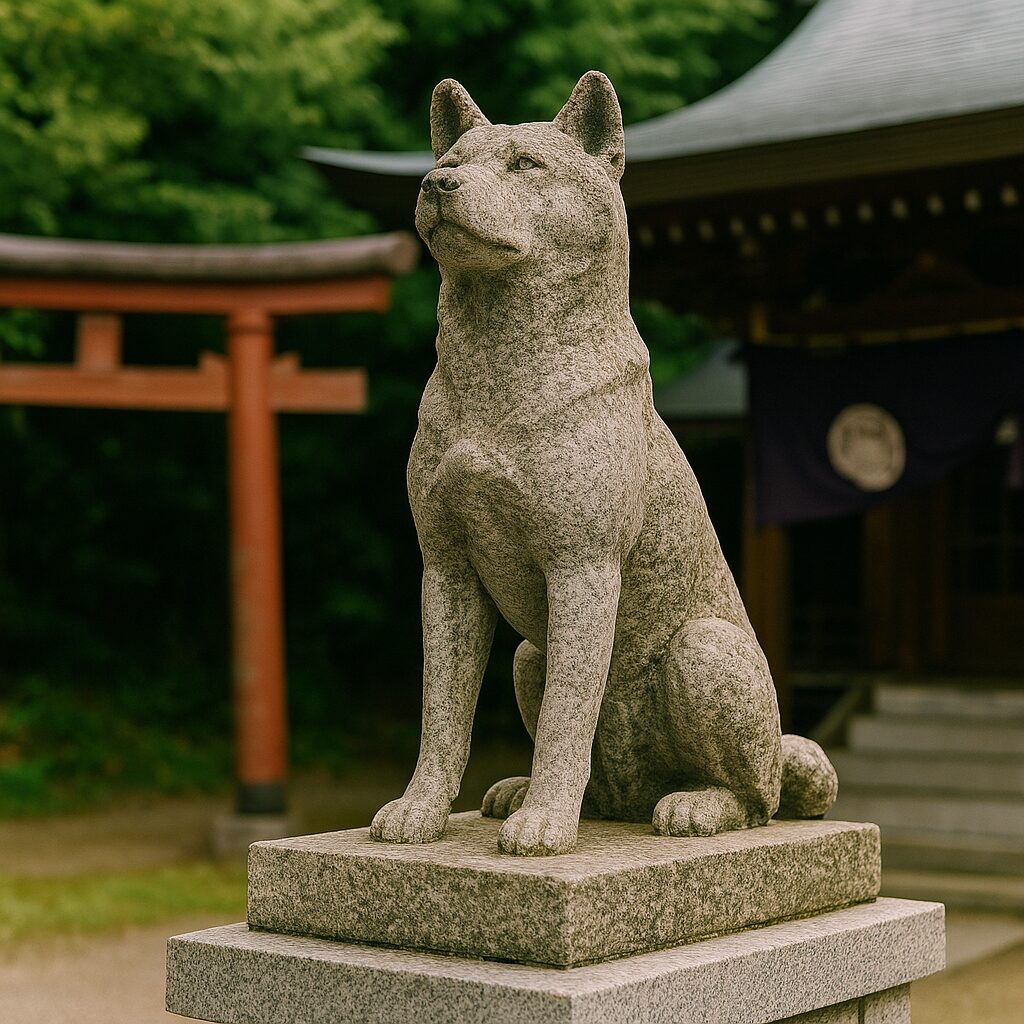Japan has long celebrated tales of canine devotion. Stories like Hachikō, the Akita dog who waited at Shibuya Station for his deceased master, are etched into global memory. But hidden away in the snowy mountains of Akita Prefecture lies a much older and equally poignant story, the legend of Shiro, a hunting dog whose loyalty gave rise to Rōken Shrine, a rare Shintō shrine dedicated to a dog.
The World of the Matagi Hunters
To understand Shiro’s story, we first step into the world of the Matagi; traditional mountain hunters of northern Japan. The Matagi traced their customs back centuries, blending survival skills with spiritual respect for the forests and animals they relied upon. Hunting in sacred areas was typically forbidden, but some hunters were granted special permits, allowing them access to restricted lands.
One such man was Sadaroku, a skilled Matagi hunter in Akita during the Keichō era (1596–1615). His permit, a valuable hunting license, was his lifeline–proof that his hunts were lawful even within protected territories.
The Fateful Winter Hunt
One frigid winter day, Sadaroku ventured into the mountains with his trusted dog, Shiro. The snow lay thick on the trails, the forest silent except for the crunch of boots and the soft padding of paws. But what began as a routine hunt soon turned disastrous.
Sadaroku was confronted by officials and accused of poaching on sacred land. Though he had a permit, fate dealt him a cruel twist: he had forgotten to carry it. Without proof, he was taken into custody, his life hanging by a thread.
Shiro’s Desperate Mission
In that moment of despair, Sadaroku turned to his faithful companion. He commanded Shiro to return home and fetch the license.
What followed was a feat of devotion that villagers would recount for centuries. Shiro bounded through snow and forest, racing against time. He barked insistently at Sadaroku’s wife until she understood, fastening the crucial license to his collar. Without pause, Shiro charged back into the cold.
But the journey was long and brutal. Accounts tell of Shiro making the exhausting trek multiple times, driven by an instinctive bond and an unwavering duty to his master.
Too Late
By the time Shiro returned, license secured to his neck, the unthinkable had already happened. Sadaroku had been executed. The officials, unmoved by circumstance, carried out their judgment swiftly.
When Shiro arrived to find his master gone, his purpose vanished with him. Overcome with grief and exhaustion, the loyal dog soon collapsed and died, his life entwined with his master’s in tragedy.
The Restless Spirit and the Shrine
Villagers who buried Shiro noticed strange happenings near his grave. Horses would panic, riders were thrown, and an unsettling presence seemed to linger. Convinced that Shiro’s spirit remained restless, they sought to honor him properly.
In 1620, they built Rōken Shrine on the hillside above Ōdate. Rather than a grave, the site became a sanctuary, a place where Shiro’s devotion was no longer a source of fear but of reverence.
Trials of the Shrine
Like Shiro’s story, the shrine endured hardships of its own. In 1936, it burned down, but miraculously the most treasured relic, the Matagi’s hunting license, survived the flames. The community rebuilt the shrine, preserving not only its spiritual importance but also the tangible link to Sadaroku and Shiro’s tale.
Today, the shrine stands as one of Japan’s rare shrines dedicated to a canine deity.
A Modern Tribute: The Stone Statue of Shiro
In 2020, marking 400 years since the shrine’s founding, Ōdate unveiled a stone statue of Shiro at Rōken Shrine. Carved in his likeness, it stands as both memorial and guardian, a reminder of love and loyalty that transcends centuries.
Each year on April 17, villagers and visitors gather for the shrine’s annual festival. Offerings are made, prayers are spoken, and Shiro’s story is retold to new generations. The preserved hunting license, displayed with reverence, continues to bridge past and present.
Shiro and Hachikō: Stories of Loyalty
While Hachikō’s vigil at Shibuya Station has become world-famous, Shiro’s tale is more ancient, rooted in the rural folklore of Akita’s Matagi hunters. Both stories reveal the same truth: that loyalty, even when met with tragedy, leaves an enduring mark on human hearts.
Shiro’s devotion speaks to something universal. It is not only about a dog’s loyalty, but about the deep trust between human and animal, and the ways in which memory and ritual preserve love long after death.
Conclusion
Rōken Shrine is more than a small Shintō sanctuary on a snowy hillside, it is a monument to fidelity and sacrifice. Shiro’s journey, both heartbreaking and inspiring, continues to resonate across centuries, reminding us of the timeless power of loyalty.
For travelers to Akita, a visit to Rōken Shrine offers more than a glimpse of history. It is a moment to pause, reflect, and honor the enduring bond between humans and their animal companions. Shiro’s story invites us to remember: love, once given, is never truly lost.

